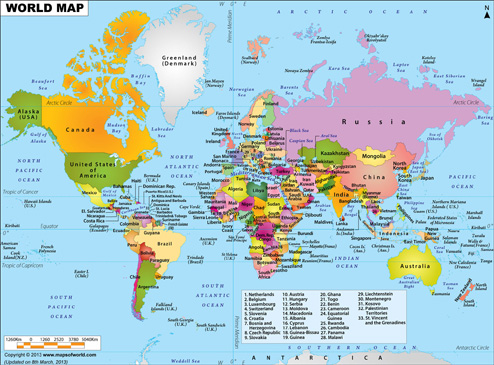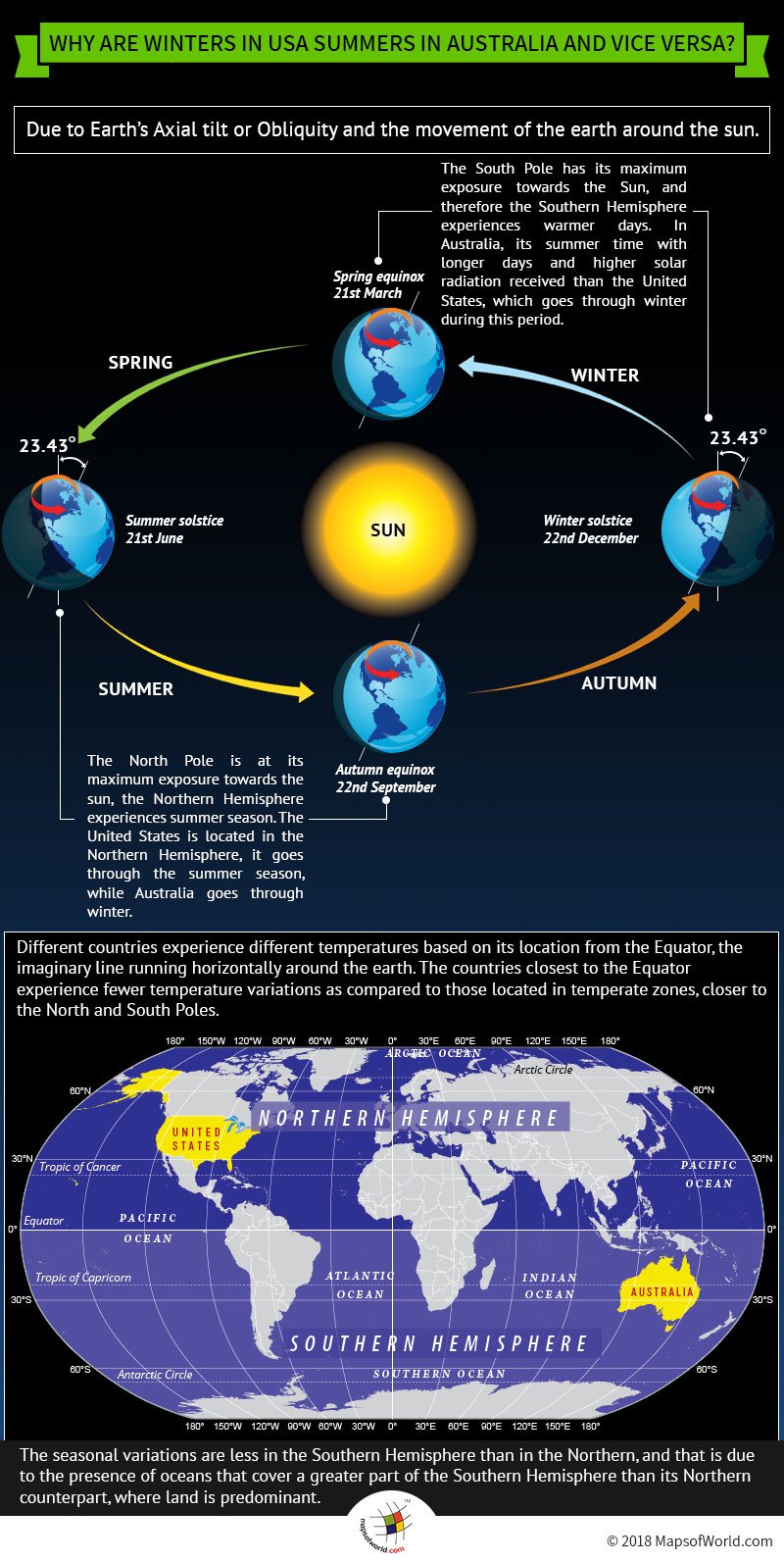Why are winters in USA summers in Australia and vice versa?
The seasonal changes occur due to the Earth’s orbit around the sun, and the axial tilt to its ecliptic plane.
The opposite seasons occurring at the same time between U.S. and Australia is due to Earth’s axial tilt, or Obliquity, and the movement of the Earth around the sun. The Earth rotates on its axis at a 23.43-degree tilt. The obliquity or axial tilt varies between 22.1° and 24.5°.
Between May and July when the North Pole is at its maximum exposure towards the sun, the Northern Hemisphere experiences summer season. During this period the northern region receives more solar energy from the sun and has longer days. Since the United States is located in the Northern Hemisphere, it goes through summer season between May and August.
At the same time, the opposite occurs in the Southern Hemisphere where Australia sits. Australia’s winter time is May through August since the South Pole points away from the sun. The days are shorter and colder, as it receives less solar energy or radiation from the sun.
Between the September and March Equinox, the South Pole has its maximum exposure towards the Sun, and therefore the Southern Hemisphere experiences warmer days. In Australia, its summer time with longer days and higher solar radiation received than the United States, which goes through winter during this period.
How does earth’s axial tilt or obliquity affect seasons?
The Axis is an imaginary line running from the North Pole to the South Pole. Astronomers believe a celestial object the size of Mars crashed into the earth 4.5 billion years back and the impact resulted in the earth tilting away from its central position. The tilt is not a permanent position and the oscillation changes over extended periods of time, usually every 40,000 years.
Gravitational forces from the Sun, Moon, and stars impact the earth’s axis and makes it wobble. It results in variation in the obliquity of the earth. At present, the earth’s axial tilt is 23.43°.
The obliquity is the angle variation from the imaginary straight line, running from the North Pole to the South Pole, and the ecliptic plane, another imaginary straight line running horizontally.
An increase in axial tilt results in an increase in seasonal contrast or severe weather patterns with colder winters and warmer summers. The variation in tilt is the Axial Precession.
Different countries experience different temperatures based on its location from the Equator, the imaginary line running horizontally around the earth. The
Countries closest to the Equator experience fewer temperature variations as compared to those locates in temperate zones, closer to the North and South Poles.
The seasonal variations are less in the Southern Hemisphere than in the Northern, and that is due to the presence of oceans that cover a greater part of the Southern Hemisphere than its Northern counterpart, where land is predominant.
Visit the following to learn more about World Weather:
Related Maps:



